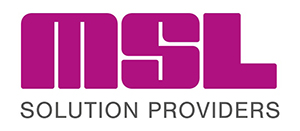How you validate your cleaning regime is just as important as how you are cleaning your facility and controlling your environment.
The European good manufacturing practice (EU GMP) provides guidance and minimum standards of environmental quality for manufactures but leaves the responsibility of defining practices and procedures to the manufacturer.
The guidance allows for greater freedom to tailor each practises to your unique facility, processes and time frames, however, this also leaves the responsibility of designing, validating and justifying these methods to the manufacturer.
No facility is truly sterile when in use. Contamination in a cleanroom can come from multiple sources including the air supply, machinery, room surfaces, adjacent areas, operators/personnel, the ingress of materials to the area and any water sources.
Implementing control on each one of these parts will never completely remove all unwanted organisms from a work area.
A study from 2011, found that in over 9000 isolates sampled, over 80% were organisms commonly found in skin flora from personnel and that 20% of isolates were either environmental or water-based organisms1.
Removing operators from a controlled area will help reduce risk of contamination but it will not remove it, the only way to keep a cleanroom truly clean, is to not use it.
So how does a facility prove that their cleaning regime is reducing the risks from this constant ingress of contamination?
Clean, Sample, Identify, Test and Adjust
Current best practise is to employ two stage cleaning with a detergent and using two or more different disinfectants on a rotation.
These disinfectants should have a range of claims suitable for their purpose and should be unimpeded by residues left by the detergents used, however there is no requirement to validate these products against the isolates collected from environmental monitoring so how does a facility know that the products they pay for are removing the risk of contamination besides trusting the claims on the packaging.
Commonly reoccurring isolates could mean many things, but one cause could be that your cleaning regime is not effective against some organisms. This could be because the organism is resistant to the cleaning products actives, the surfaces in the cleanroom are interfering with your products or protecting the organisms, longer contact times are required, or that some product claims may not be accurate when put into practise. So, what can you do?
Clean - Routine and deep clean procedures will be a common part of life in any cleanroom facility. These should be observed and audited routinely to ensure they are being followed correctly.
Sample – Environmental monitoring is a requirement. Microbiological monitoring using swabs, air sampling and contact plates, whilst the site is at rest and in use, and both pre and post cleaning will give you data which can be tracked and monitored producing a broad picture of the contamination entering a site.
Identify – Identifying the isolates microbiological monitoring recovers is key. Knowing that you are recovering bacteria, yeast or mould is only part of the story knowing if you are recovering the same organisms over and over may indicate a problem in practise or procedure.
Test – Once problem organisms are identified the products used in cleaning procedures need to prove they can remove the threat if employed correctly. This testing needs to represent how that product is used by your personnel and the surfaces where the organism has been present during sampling.
Adjust – Don’t keep doing the same thing over and over if a problem becomes clear change things to mitigate it. Ensure personnel training is adequate and that the risks of poor cleaning are understood. If a surface is commonly returning bacterial counts after cleaning consider removing it, if a cleaning product cannot remove an organism which poses a risk to your product adjust how you clean or change what you clean with. Identifying issues and doing nothing is just wasting money and risking your reputation.
Mitigating risks by employing automation and robot technologies will only go so far to remove contamination, ANNEX 1 will require all companies to create new procedures to validate their cleaning and to reduce the risk of contamination and a cost-effective way of doing this will be to evaluate your current procedure and ensure you are using products which deal with your problems now.
Contact the MSL team via email to peter.thistlethwaite@msl.io or by phone at 01706 282960.
Reference
1. A Review of Cleanroom Microflora Types Trends and Patterns





